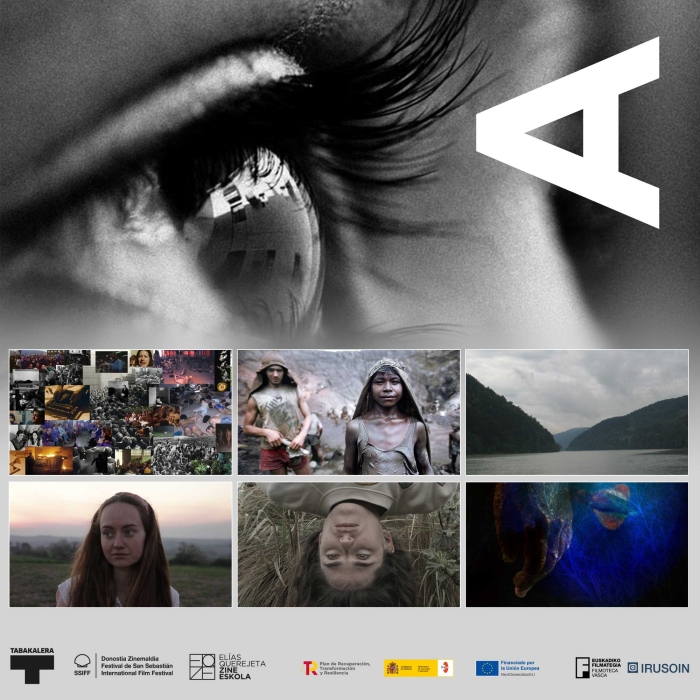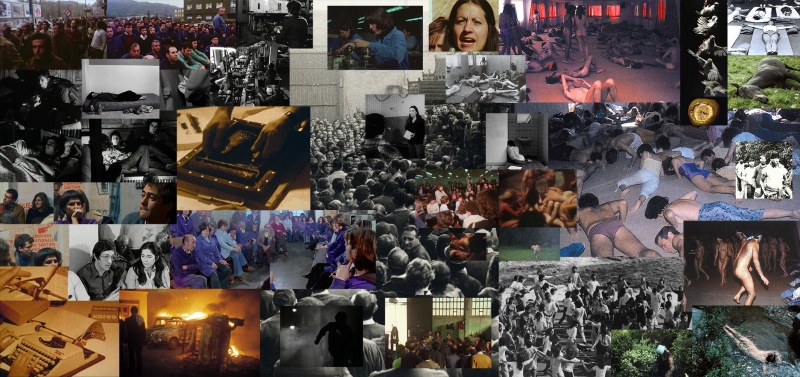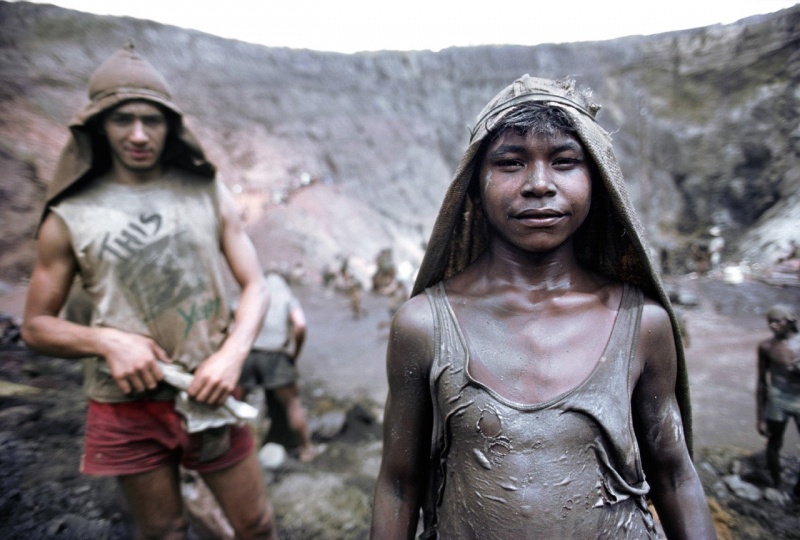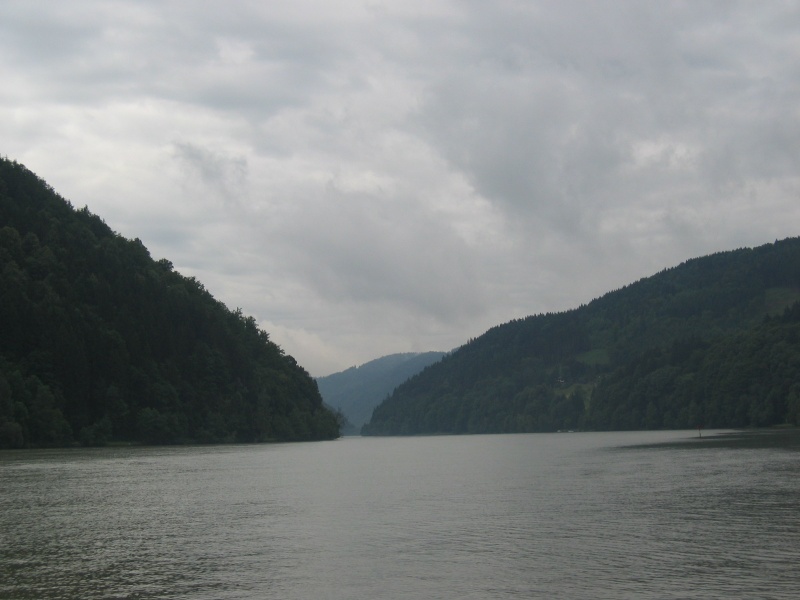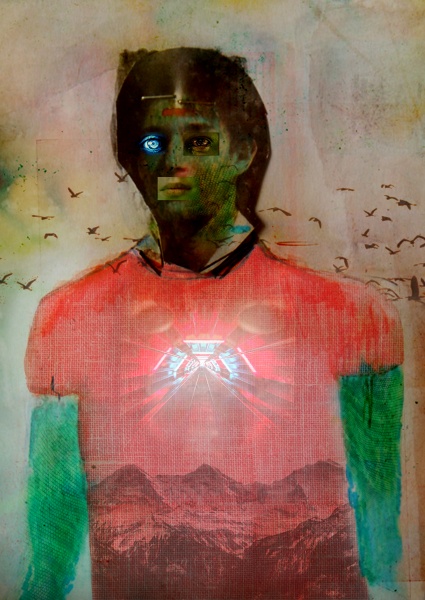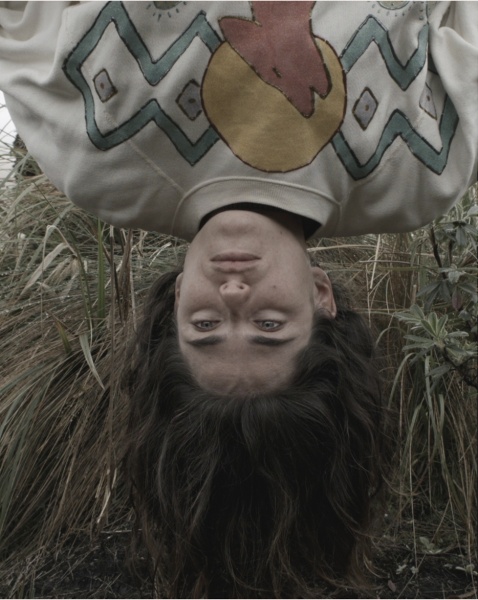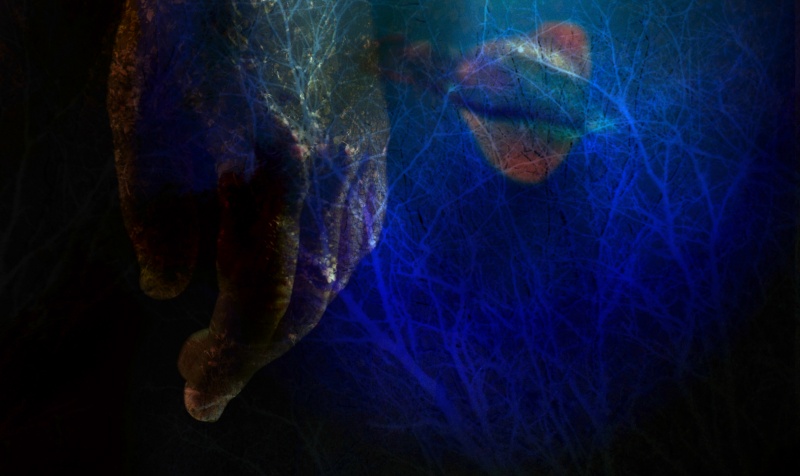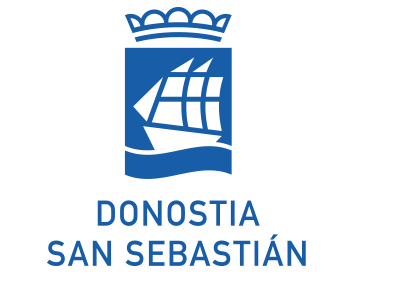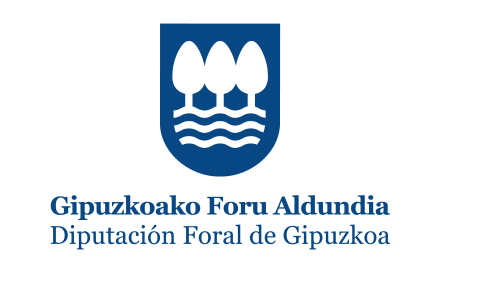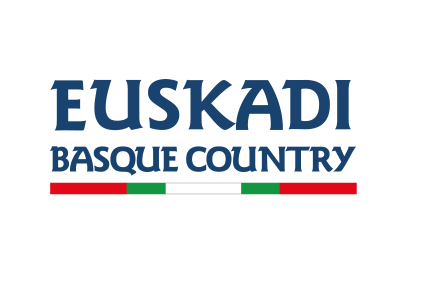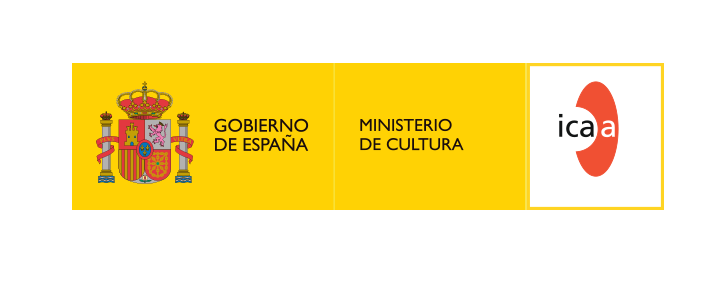The film projects of Ana Cristina Barragán, Jaume Claret, Meritxell Colell, Irati Gorostidi, Joâo Paulo Miranda and Maximiliano Schonfeld have been selected from among the 281 submitted for Ikusmira Berriak’s eighth edition. In 2022 the programme of residencies and audiovisual project development organised by the San Sebastian Festival, Tabakalera International Centre for Contemporary Culture and Elías Querejeta Zine Eskola (EQZE) will increase the number of residents from five to six.
- EQZE: La hiedra, Ana Cristina Barragán.
- NEST: Estrany riu / Strange River, Jaume Claret.
- SPAIN: Lejos de los árboles / Far from Trees, Meritxell Colell.
- BASQUE AUTONOMOUS COMMUNITY: Anekumen, Irati Gorostidi.
- INTERNATIONAL: Bandeira, Joâo Paulo Miranda
- INTERNATIONAL: Frankenstein, Maximiliano Schonfeld.
The Ecuadorian director and screenwriter Ana Cristina Barragán (Quito, 1987), who landed a Horizontes Award special mention at the San Sebastian Festival with her feature debut Alba (2016), has been selected to represent the third year of students at the Elías Querejeta Zine Eskola (EQZE) with her project La hiedra. The Catalan Jaume Claret (Barcelona, 1998), one of the students to have graduated from the school’s first year, will participate with Estrany riu / Strange River in the Nest category, where he premiered his short film Ella i jo (2020). Meritxell Colell (Barcelona, 1983) has been selected in the l Spain category to develop Lejos de los árboles / Far from Trees , her third feature film, following Con el viento / Amb el Vent (2018), which featured at Berlin Festival and screened in Made in Spain, and Dúo, now in post-production The moviemaker from Navarre, Irati Gorostidi (Valle de Egües, 1988) will participate on behalf of the Basque Autonomous Community with Anekumen, her first feature film after several experiences in the field of short films, after having participated in the Noka programme and having been a resident in Tabakalera’s Artist's Space.
In addition, this year the international category will have two representatives. On the one hand, the Brazilian Joâo Paulo Miranda (Porto Feliz, 1982), who competed in New Directors with Casa de antiguidades / Memory House (2020), will take advantage of the Ikusmira Berriak residency to work on his coming film: Bandeira. On the other, Frankenstein is the title of the project by Argentina’s Maximiliano Schonfeld (Crespo, 1982), who opened Horizontes Latinos at the last edition of San Sebastian Festival with his third feature, Jesús López, a former participant in WIP Latam 2020.
Made up of representatives of Tabakalera International Centre for Contemporary Culture, the San Sebastian Festival and the EQZE, the selection committee has chosen projects of varied subject matters set in different parts of the world: an exploration of the ties between a mother and her son addressing the relationship of bodies with nature (La hiedra); a tale of masculinity in fraternal relationships which changes as the River Danube alters its shape (Estrany riu); the adventures of a woman as she creates a sound map of the Andean geography’s remotest areas to talk about mourning, fear, dreams, the inheritance of exile and losing one’s roots (Lejos de los árboles); the story of disillusionment among a group of militant workers who, in the late 80s, leave their factory to form a free-thinking commune in the mountains of Navarre (Anekumen); a tour of Argentine landscapes and modes of existence, detours and fragile, almost invisible contours (Frankenstein); and the downward spiral into madness of a young native gold prospector in the heart of the Amazon rainforest ( Bandeira).
The residency will run for eight weeks split into two periods. The six filmmakers will arrive on March 14th to Tabakalera’s Artist's Space, where they will develop their projects until April 24th. During this time, they will be advised by members of the committee of experts and professionals specifically chosen for each project based on its needs. In June, each resident will receive a development grant of 5,000 euros to continue working on their project between the two periods of the residency. In September, coinciding with the Festival dates, they will return to San Sebastian to complete the last two weeks of the residency. During this phase they will be able to pitch their projects to industry professionals and will be given a personalised schedule of meetings with partners interested in participating in their projects. Furthermore, the production company Irusoin will give the Irusoin Post-production Award to one of the selected projects. The award consists of post-producing the sound, colour, graphics and of obtaining a DCP master.
Positive outcome
Regarding the projects to have participated in Ikusmira Berriak 2021, Manantial by Manual Muñoz Rivas and produced by El Viaje Producciones, has received the ICAA grant for feature-length documentaries. La gruta del viento / The Wind’s Cave , by Eduardo Crespo, that received the Irusoin Award at San Sebastian Festival, will be produced by Pensar con las Manos and Primera Casa. Hasta que el lugar se haga improbable / Until the Place Becomes Improbable , by Magdalena Orellana, has been selected for the audiovisual project residencies at Cineteca and at the Matadero Centre for Artists in Residence. Moreover, Y así seguirán las cosas / And thus it will go on , by Marina Palacio, will be produced by Vitrine Filmes and Wandervogel, by Mina Fitzpatrick, by Site.
The outcome is also positive with respect to the achievements of the projects to have participated in earlier editions of Ikusmira Berriak. Outstanding amongst the most recent are El gran movimiento (Kiro Russo, 2021), which participated in Zabaltegi-Tabakalera after winning the Special Jury Prize in the Orizzonti section at Venice Festival, as well as being Bolivia’s Oscar candidate in the Best International Feature Film category and winning the Best Director Award at the Bosphorus Film Festival. Eles transportan a morte / Ellos transportan la muerte ( They Carry Death, (Helena Girón, Samuel M. Delgado, 2021), recipient of a special mention in the Zabaltegi-Tabakalera section, also received the Best Technical Contribution Award at Venice Critics’ Week as well as several other accolades, including Best Director, at Cinespaña Toulouse 2021. In addition, 918 gau / 918 Nights (Arantza Santesteban, 2021) landed the City of Lisbon Award for Best Film at DocLisboa 2021 and the Award to Best Film of the TFFDoc/Internazionale.doc section at the Torino Film Festival.
Donostia-San Sebastian, 1978. A group of libertarian militants gather to print a statement in view of the imminent signing of a controversial collective bargaining agreement. At the factory where they work, it is obvious that the growing unionisation of the workers’ movement has driven their radical political project to irrelevance. Disillusioned, they progressively direct their revolutionary endeavours towards the most intimate areas of their lives. The most radical among them decide to leave the factory and join a free-thinking commune in the mountains of Navarre.

"Anekumen focusses on the move of revolutionary principles to the most private areas of life. Set in the time when workers’ autonomy was developing in the 70s, it explores their hostility towards the assembly processes and fragmentation of the workers’ movement, observing one of the most typical reactions to political deception: the search for a reduced and isolated model of society in which to be able to put their political ideals into practice, taking a deeper look at the complex contradictions involved in that road.".
Irati Gorostidi, director
Bandeira tells a story about fatherhood and the presence of violence through generations and generations in a family. It takes place in a forest, where João runs away to his father's house, Ze, with his wife Cecilia and his disabled son Jonas, who is accused of having seriously injured another child. Bandeira is the search of a father to understand his own son and to accept that he is not designed to respect the rules of our society. This son might be closer to nature than to the human world. It’s a personal story inspired by my own relationship with my son and my father, and by the rooted violence of my country, Brazil.

"As a Brazilian author, indigenous on my mother’s side and bandeirante (literally flag-carrier) on my father’s side, I believe it is my responsibility to give a voice to this struggle with which I have always identified. Through all of my films I have always tried to shed light on the so-called minority, those who are persecuted and rejected by society. Bandeira follows the same line as my previous films, where my characters always fight against a nature that was imposed on them".
Joâo Paulo Miranda, director
Didac (15) and Biel (13) ride their bikes along the banks of the Danube with their family. The two brothers are inseparable and together they share their sexual awakening. But the relationship suffers when Didac starts seeing Alexander (18) in the water, who appears and disappears like a river ghost. Didac, like the Danube, is growing in leaps and bounds and starts to feel a strong desire for the mysterious boy. Biel, however, sees how his brother is growing away from him.

"Every summer my family and myself would cycle along the banks of a different European river. Those rivers conditioned the way my childhood and that of my siblings progressed towards our youth. With Estrany riu I want to reflect on masculinity in brotherly relations. It is an investigation into the sexual awakenings of two siblings and the loss of the elder brother as a reference. The way I address cinema is by means of architecture and spaces. In this case, Estrany riu is developed based on the geography of the Danube. The river that starts out being no more than a stream and that widens at the same time as Dídac grows up".
Jaume Claret, director
What do a young boy in love in the mountains and a caged thrush have in common? A couple of men on a farm looking for a son and a dog obsessed with burrows? A man searching for a friend to join him in the local town festivities and a gang of bikers who don’t want to go home? A swamp in the north that reflects all the stars at night and a father who remembers the Balkan wars? A fox and a desert in Catamarca and working the land in Patagonia? The Mapuche resistance, lost languages and fishing boats in the Argentine sea? Frankenstein.

"During the time that I worked with the writer Selva Almada, a number of concerns arose within me in regard to the clash between the word and the image. To the strictly literary and the cinematic. To their movements and their insuperable forms where we always proceed from polarity and experimentation. And precisely when shooting the film with Selva I re-read certain fragments of Frankenstein that I had underlined in Mary Shelley’s book. Above all the chapter where the Monster surreptitiously observes the daily routine of a family on the farm and who, through this observation, learns language, work, love and sadness. In my imagination, that farm was very similar to those in Entre Ríos that I had so often filmed. The book, like the film, proposes a voyage through landscapes and modes of existence, detours and fragile, almost invisible contours. And the same question: is there some kind of plan for us?"
Maximiliano Schonfeld, director
At the age of 31, Azucena decides to look for the son she abandoned after getting pregnant at the age of 13. Julio, an 18 year-old boy, is in his last year at the orphanage and looks the same age. Azucena decides it is him.
The Ivy has a unique scent created by the tenderness, the Oedipus complex, the mother-son relationship from the angle of instinct and the ties between these two strangers.

"I am interested in films which, more than just a story, carry a smell, a unique flavour in their atmosphere, in their oddity, in the invisible depths of their little occurrences. When I direct I think a lot about bodies. About their clumsiness, about touch, about the expressiveness of hands, about all those things we can’t see, but that we can feel. The body of a son and a mother who look the same age, the sleeping body; what happens beneath the eyelids, the place to which the film has no access. The bodies of the other orphans inhabit this story, the collective masturbations, the games and the animality".
Ana Cristina Barragán, director
Angélica embarks on an epic journey to the heights to create a sound map of the Andes. With her are two guides, great experts in the high Andean plateau. By day Angélica records stories, tales and songs. By night, she listens to the magnetic tapes she has recorded before proceeding to weave them. Insomnia, altitude sickness and knowing that her 98-year-old grandmother is sick in Mexico nudge her into a dreamlike state where voices invade her and she reconnects with her Mexican childhood. A story where fantasy and reality join hands to talk about loss, uprooting and the legacy of exile. A journey through the past and future for the navigators of impossible travels.

Meritxell Colell, director

Organizers

Funded by

Collaborators


